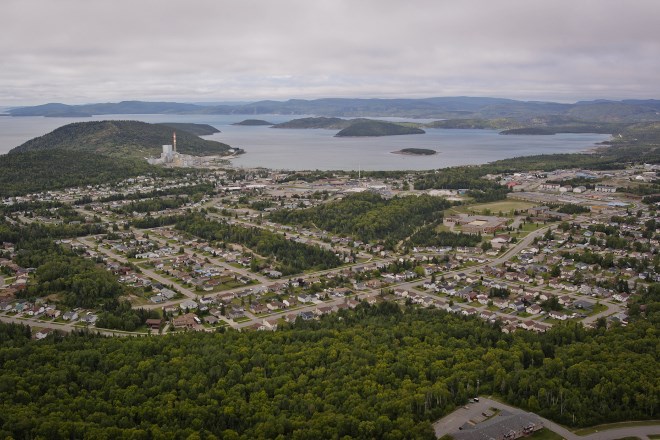There’s nothing like having choices.
If all goes according to plan, homeowners and businesses in five towns along Lake Superior’s North Shore should realize some major savings on their energy bills in the coming years.
The communities of Terrace Bay, Schreiber, Manitouwadge, Wawa and Marathon have banded together with Toronto-based Northeast Midstream in preparation to tap into a provincial energy program to finance a liquefied natural gas (LNG) delivery network.
“We’re ready to submit the first day it’s open,” said Marathon CAO Daryl Skworchinski, who expects the Ontario Energy Board (OEB) to begin taking applications for the Natural Gas Access Loan Program sometime in December or early January.
The rising costs of propane, fuel oil and grid electricity for heating has forced the communities to look into LNG.
The rugged terrain along Superior’s north shore makes it too costly to extend the natural gas pipeline east from Nipigon.
So instead, they’ve been hatching a plan with Northeast Midstream to chill and convert into a liquid state, then truck it down the Trans-Canada Highway to proposed distribution points in each community where it will be converted back into a gas and piped into local homes and businesses.
From a logistics perspective, Skworchinski said: “It’s a pretty slick solution.”
The numbers in a feasibility study completed last summer looked so favourable that they’ve progressed to more detailed business and financial stage in the last few months.
Their research indicates LNG will collectively save the communities $247 million over 40 years, and cut greenhouse gas emissions by 17,000 tonnes of carbon dioxide annually; akin to pulling 3,600 cars off the road.
Telephone surveys with residential, commercial and institutional customers last April and May indicated between 57 and 84 per cent would make the switch to natural gas if it were made available.
Pulp maker AV Terrace Bay has signalled their support, but convincing the area’s other industrial players to come aboard remains a work in progress, Skworchinski said.
Financing the LNG project will be a combination of provincial money and debt servicing from Northeast Midstream.
“We think this is a solution that more than one part of the province will look at, assuming we get the approval to go ahead and get the financing and the construction approval,” said Skworchinski.
The $200-million provincial program provides loans to communities, who partner with utilities, to subsidize natural gas expansion in rural areas, along with an additional $30 million in grants.
Skworchinski said they’ll be boldly applying for the entire allocation.
“We’re going to go in with a full ask,” he said. “I don’t think … that anybody’s near as far as along in the actual planning process as us.”
Once the application is filed, Northeast Midstream will start the detailed design and engineering and submit all the necessary requirements to the OEB to receive approval to begin construction, which could start by 2018 and roll out to each community over a three-year period.
The cost to establish this delivery network is being determined through a detailed financial analysis.
Despite the lengthy distances to truck gas – Nipigon to Wawa is 365 kilometres – Skworchinski said they’ll be one base rate for all customers.
The loan program’s eligibility requirements have yet to be spelled out by the province, but he harbours no worries in their plan and approach, adding they’ve received “very positive” reviews on their proposal from various provincial ministries.
The provincial Northern Ontario Heritage Fund contributed $100,000 last March for the Town of Marathon to do the LNG feasibility study.
“We really see this as a pilot project that’s scalable and can be replicated across Ontario, including the Far North,” said Skworchinski.
The introduction of LNG might prove complimentary to the town’s conceptual idea to establish a biomass-fired district heating plans to various institutional buildings, and take advantage of the community’s abundant fibre basket, he added.
“The best case scenario is if we can get to biomass and natural gas, and the more we ween ourselves off hydro, the more we save ultimately.”




